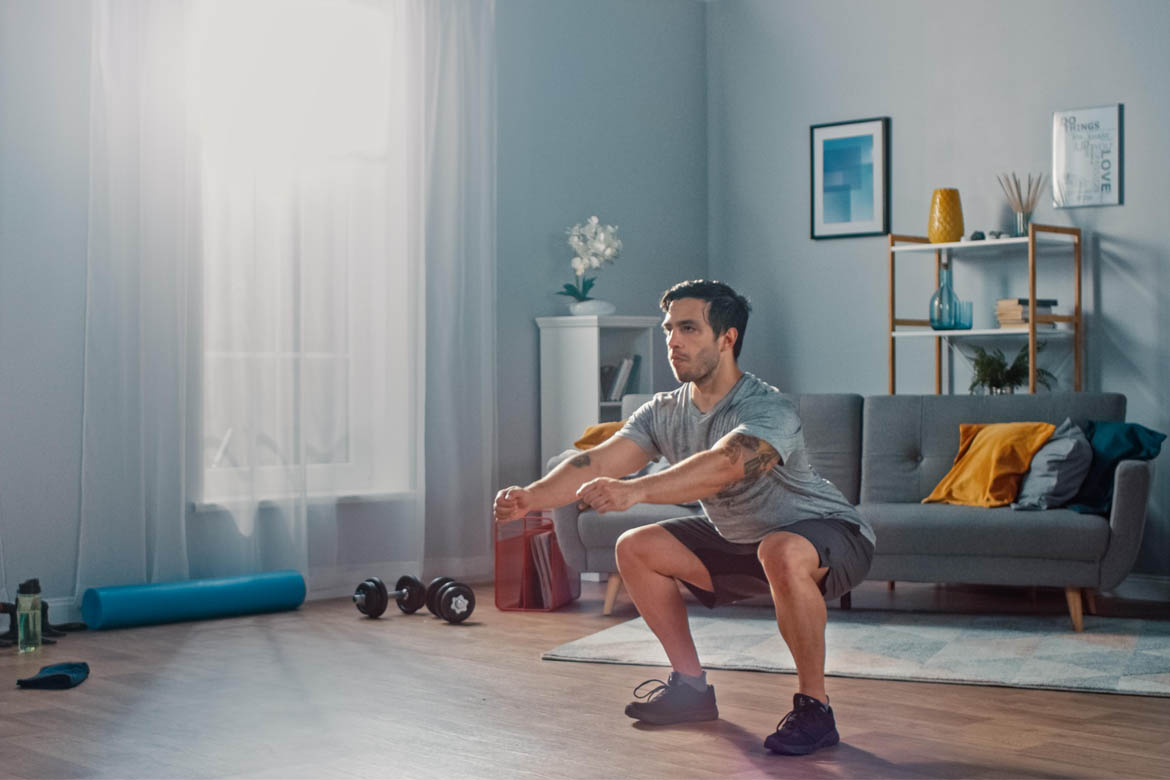Firstly, the ongoing pandemic has caused many of us to lose access to our regular gyms and training centres. It has forced us indoors, making us make do with whatever small amount of equipment we have to hand to get a good workout in.
Secondly, the growth of the at-home workout equipment sector has meant that we can build better home gyms than ever, complete with decent cardio machines, squat racks and punch bags, all for a pretty reasonable amount of money. Of course, this isn’t needed – you can get a good home workout in with little more than your own bodyweight – but it gives us options.
Finally, the growth of online training content allows us to gain access to expert instruction at the press of a button, on any device we want. There are hundreds, if not thousands, of YouTube yogis, HIITers, CrossFitters and callisthenics buffs with follow-along fitness classes for all levels. Though this will never be as good as in-person instruction, the quality of the content makes it a very close second best.
But there are still some things we need to bear in mind as we work out from home. There are a few tips to bear in mind if you really want to make the most of it.
4 Top Tips for Working Out at Home
1. Set up your own, personal space
This can be a living room, bedroom, hotel room, back garden… wherever. But, when you come to train, fence it off, make sure nobody will disturb you, and set it up the exact way you want it for your workout.
A massive reason that gyms are so helpful is that they are separate spaces that allow you to get into a training frame of mind, without worrying about the kids, your spouse, your work and so on. You automatically switch into athlete mode as soon as you step into your gym. Try to recreate this at home.
2. Aim for variety
The chances are that you have a limited kit. This doesn’t mean your workouts need to be limited. For example, schedule a couple of yoga classes per week, following your favourite YouTube yogi, a couple of callisthenics classes, following any of a hundred good quality online programs, and a couple of aerobics classes (again, there are plenty of videos available.) Find a few permutations of what fits into your training schedule and mix it up as much as you can.
Doing the same thing, in the same space, with the same equipment, in an area you don’t leave anywhere as much as you used to, will get you down. It will demotivate you. This self-imposed variety will go a long way to keeping you in the game.
3. Try to find accountability
Usually, this may come from a trainer or class coach in the gym, from your usual training buddies, or simply from the same faces at the gym seeing you day-by-day, expecting to see your progress.
While we’re all stuck at home, this doesn’t happen. You have to create it yourself. There are a couple of ways to do so. You could have a text conference with your usual training crowd. Make sure you all do the same thing at the same time, ensuring it gets done. Or you could have check-ins with friends, or a strict program to follow, or smaller, more frequent SMART goals to keep you on track.
Training at home is all about artificially replicating the benefits of going to a gym or training centre. Try to do this in whatever ways you can.
4. Get the right gear – practical and portable
When you’re looking at home workout equipment, there are really two criteria you need to fulfil.
Firstly, the kit needs to be easily portable. One of the main reasons people turn to at-home style workouts is that they travel a lot and want something they can do in a hotel room, on the go. You should be able to pack it away easily and it should be light enough to carry around. This means that you can store it easily and that you can take it away with you when you travel.
Secondly, you want to look at utility and versatility. If you can only do a couple of exercises with a piece of equipment, it’s not much use: you want something that can work pretty much everything, that’s light and easy to store, and ideally, that’s practical to buy and carry around with you.
This leaves us with a couple of options. I’m going to write off dumbbells, kettlebells and any other type of ‘weight’ straight away. They are incredibly versatile and can be very reasonably priced, but you can’t exactly carry them around with you. The whole point is that they are heavy!



